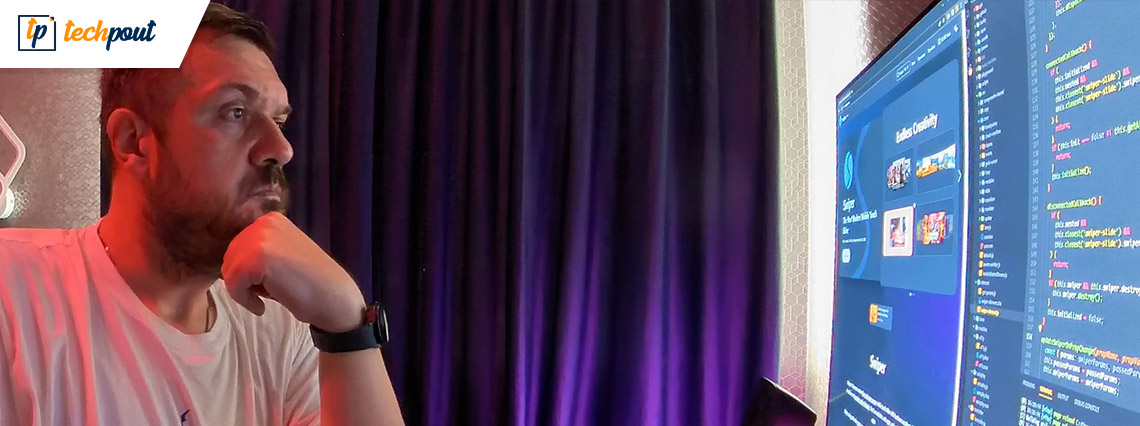Starting From a Hackathon Project To a Successful Open Source Framework: Vladimir Kharlampidi, a Front-end Developer Shared His Experience of Working on Framework7

Framework7 is a project that has made life much easier for many web developers, but which is still not discussed enough for now.
Framework7 is an intuitive and user-friendly tool for creating various mobile applications, which are based on HTML, CSS, and JavaScript. Despite its uniqueness and relevance, the project is available completely free of charge. The community of web developers is sure that the project does not have enough advertising. As many specialists as possible should know about Framework7.
Numerous websites, mobile applications from companies such as Wappler, Thorium Builder, WFM Buddy, and government applications are created on Framework7.
Framework7 is not the only known project launched by Vladimir Hardampidi. The developer is also known as the creator of the Swiper slider, which is a tool for scrolling through images, the so-called “image carousel”.
Before working on Open Source projects (Open Source is software with an open primary code, which is available for modifications performed by third parties without violating the copyrights), Vladimir used to work as a front-end developer in many different companies, such as: ADV, Intern Avenue, FindersCrowd, CodersRank, and Optimonk. He has implemented a lot of projects for the following well-known brands: Disney, Microsoft, McDonalds, Mercedes, Panasonic, etc.
Today we are going to talk with Vladimir Kharlampidi about how the project was created, and what advantages and significance it has for the industry in general.
1. You have 13 years of experience in Open Source and web development, and this is your main job. At the same time, Open Source development remains a hobby for many people. How did you manage to move from freelancing to full-time work on your own projects?
From the very beginning, I was inspired in creating universal products, which could facilitate the work of many other developers. And as soon as my projects started gaining popularity, it was easier for me to focus on my own Open Source projects, and over time, a lot of developers all around the world started to use them actively. But it was not always like this.
I started working as a front-end developer. I used to work as a freelancer, creating various websites and mobile applications for local companies. I used to collaborate with ADV and Disney, for whom I developed websites, games, and applications for large clients, including Sony, many reputable banks, various online stores, etc.
I also successfully collaborated with the award-winning British startup known as Intern Avenue, which is a service that connects students and graduates, who are looking for paid internships with potential employers via a data-driven assessment system.
More or less at the same time, I created Brief, which is a messenger designed to simplify business communications by aggregating various sales channels in a single place. In parallel with that project, I used to work for the Swedish company known as FindersCrowd, which is a service for effective management of recommendations and advice in organizations, and collaborate with the Hungarian companies CodersRank and OptiMonk.
2. Vladimir, will you please tell us more about Framework7 and the way it was created?
In 2014, I made the decision to take part in the annual online hackathon calledStatic Showdown (a forum where members work together to solve a particular issue in a limited frame of time). The main focus was on the development of static websites, applications, and games using only HTML (WEB markup language), CSS (a web page rendering language), and JavaScript (a language for programming), all without server-side logic.
At the same period of time, iOS 7 came out with a new “flat” design, which became viral. But despite the success and popularity of such a design, there were no similar solutions for web platforms yet. Therefore, I decided to replicate the iOS application interface using web technologies as a project for this hackathon.
This is how the idea of Framework7 appeared. I wanted to create a unique “frame” of the future web application, which includes various visual components, such as lists, drop-down windows, panels, buttons, form elements, animations, and navigation for developing web applications and “hybrid” mobile applications, using the most advanced web technologies. The primary goal of the project is to simplify and speed up the web development process.
At that time, jQuery Mobile, which is a set of tools for managing the content of WEB pages, was one of the most popular frameworks, but even then it used to look quite outdated and never switched to a “flat” design.
It took me around 48 hours to create the first version of Framework7 . And this project won in the “Crowd Favorite” nomination.
As soon as the hackathon ended, I decided to write a post about my project on Hacker News in order to get feedback from other developers and to know their personal opinion. The post quickly sold out, so I decided to further develop Framework7 as a tool for creating websites and mobile applications.
3. Why were the developers fond of Framework7 so much? What are the main advantages of it?
Framework7 became one of the first in the niche of “hybrid” mobile applications. Before, if you wanted to create an application for iOS and Android, you had to know Swift, Kotlin, or Java, and thanks to Framework7, just basic knowledge of web programming is enough. So it means that even a single developer is able to create an application for iOS and Android.
It is obvious that Framework7 saves a lot of time and resources for the developer. And even a novice specialist is able to create mobile applications.
Despite the fact that the project was launched in 2014, I continue working on it, constantly improving, modernizing, and upgrading Framework7 in order to meet the most modern web standards, current designs, and visual styles.
Speaking about the main features of Framework7, the first one, which is worth mentioning is stable and fast response. Despite the fact that some minor bugs may still appear, firstly, they are extremely rare, and secondly, they can be fixed very quickly.
There is another feature that I would like to mention is the availability of clear and detailed documentation, which contains all the examples, descriptions of possible difficulties, and their possible solutions. Also, Framework7 has a visual and accessible Kitchen Sink (base of knowledge, toolkits, and definitions of terms), where you can always peep at how everything functions, and find out what components are available, and how they function.
That is why Framework7 continues to be used in thousands of mobile and web applications, even at the governmental level. For example, it was used for the official COVID-19 vaccination mobile app during the pandemic in Chile. At the same time, the official website of the project (https://framework7.io) is visited by 30 thousand developers every month, and the number of page views exceeds 300 thousand.
4. Can we claim that Framework7 occupies a significant place in the industry?
I think that Framework7 has taken a stable place in the market during the entire time of its existence. Just recently, he got the first competitor, which is the Ionic company. A huge team is working on this startup and multi-million dollar funding has been invested in it. But even despite all these favorable conditions, the competitor company has much fewer available UI (User Interface) components.
The latest version of Framework7 has already implemented the latest version of the Material You design for Android devices, unlike the previously mentioned Ionic. The advantages of Framework7 are also noticed by a lot of developers who work with two software platforms. According to them, Framework7 has a much better visual component and the implementation of many essential functions.
5. What are your future plans?
I plan to continue developing my projects. There is also an idea to create a mobile application constructor, where no programming knowledge is required, the so-called no-code solution. In recent years, the demand for the concept of “Low-code” has been growing, so such a project will not only be useful but also relevant.


